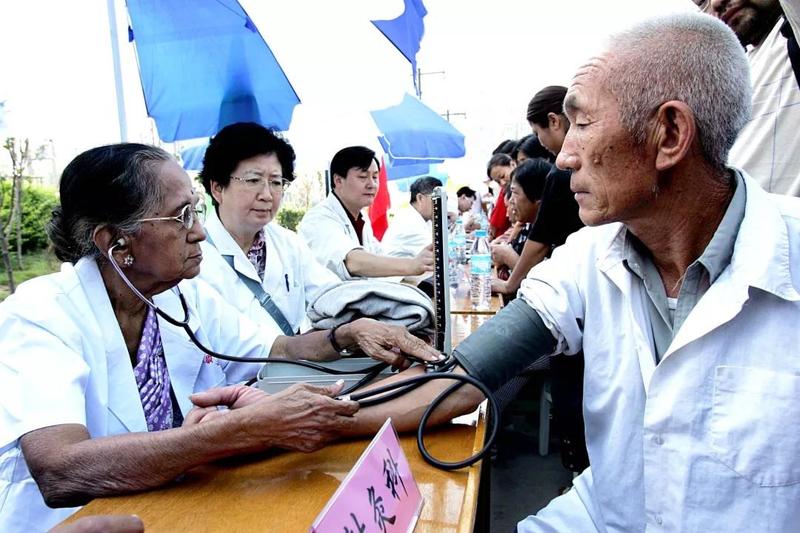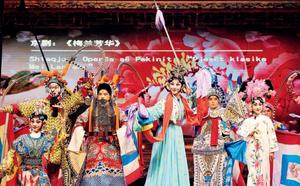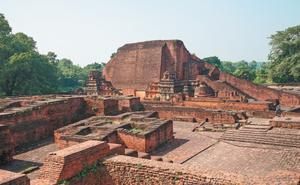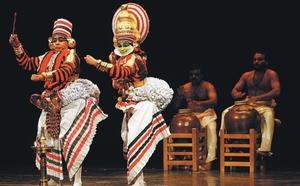Photo exhibition highlights past China-India interactions, Satarupa Bhattacharjya reports.
 Indian doctor Vatsala Kotnis (foreground left) and her Chinese colleagues provide free medical service to the residents of Tangxian county, Hebei province, China, on Sept 5, 2005. This image and the four below are among exhibits of the ongoing Beautiful India, Beautiful China show. (PHOTO PROVIDED TO CHINA DAILY)
Indian doctor Vatsala Kotnis (foreground left) and her Chinese colleagues provide free medical service to the residents of Tangxian county, Hebei province, China, on Sept 5, 2005. This image and the four below are among exhibits of the ongoing Beautiful India, Beautiful China show. (PHOTO PROVIDED TO CHINA DAILY)
A host of events had been announced by the two governments earlier to mark the 70th anniversary of the establishment of diplomatic relations between India and China this year.
But few were held, owing largely to the COVID-19 pandemic.
 Peking Opera, a well-preserved Chinese traditional art form, is also a UNESCO intangible heritage. (PHOTO PROVIDED TO CHINA DAILY)
Peking Opera, a well-preserved Chinese traditional art form, is also a UNESCO intangible heritage. (PHOTO PROVIDED TO CHINA DAILY)
 Nalanda Mahavihara, built in India in the fifth century, was a top academic center that attracted scholars worldwide, including Chinese monk Xuanzang. (PHOTO PROVIDED TO CHINA DAILY)
Nalanda Mahavihara, built in India in the fifth century, was a top academic center that attracted scholars worldwide, including Chinese monk Xuanzang. (PHOTO PROVIDED TO CHINA DAILY)
It also allows us to look at ChinaIndia relations from a broader historical perspective, and draw inspirations from itSun Weidong, China’s ambassador to India
A photo exhibition titled Beautiful India, Beautiful China was launched in Beijing on Dec 8 where China's Ambassador to India Sun Weidong, appearing on video, said: "It also allows us to look at China-India relations from a broader historical perspective, and draw inspirations from it."
Mutual learning is the driving force, he added.
"We should follow the guidance of the two leaders, redouble our efforts to meet each other halfway, strengthen dialogue and exchanges, and overcome difficulties and challenges, in order to put China-India relations on the track of healthy and stable development," Sun said.
Themed the "dragon-elephant dance", after the associated symbolism, the three-month online show, presented by China Pictorial, an affiliate of the China International Publishing Group, has images of ancient architecture, political and people's engagement, landscapes and festivals, and so on.
 Baima Temple in Henan province is associated with the arrival in China of Indian monks Kasyapamatanga and Dharmaranya. (PHOTO PROVIDED TO CHINA DAILY)
Baima Temple in Henan province is associated with the arrival in China of Indian monks Kasyapamatanga and Dharmaranya. (PHOTO PROVIDED TO CHINA DAILY)
 Kutiyattam, one of India's oldest living theatrical traditions, is a UNESCO intangible heritage of humanity. (PHOTO PROVIDED TO CHINA DAILY)
Kutiyattam, one of India's oldest living theatrical traditions, is a UNESCO intangible heritage of humanity. (PHOTO PROVIDED TO CHINA DAILY)
Some Indian and Chinese scholars also spoke at the launch.
Monks of both countries created a body of Buddhist literature in ancient times that left intangible imprints on East Asia, B. R. Deepak, a Sinologist at Jawaharlal Nehru University in New Delhi, said over video.
In modern times, the two countries have evolved too fast to learn from each other, Wang Bangwei, director, Center for India Studies, Peking University, who was present, said. "China and India need to understand and appreciate each other on a deeper level."
Contact the writer at satarupa@chinadaily.com.cn


